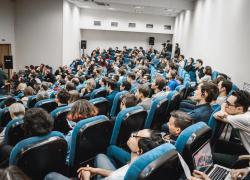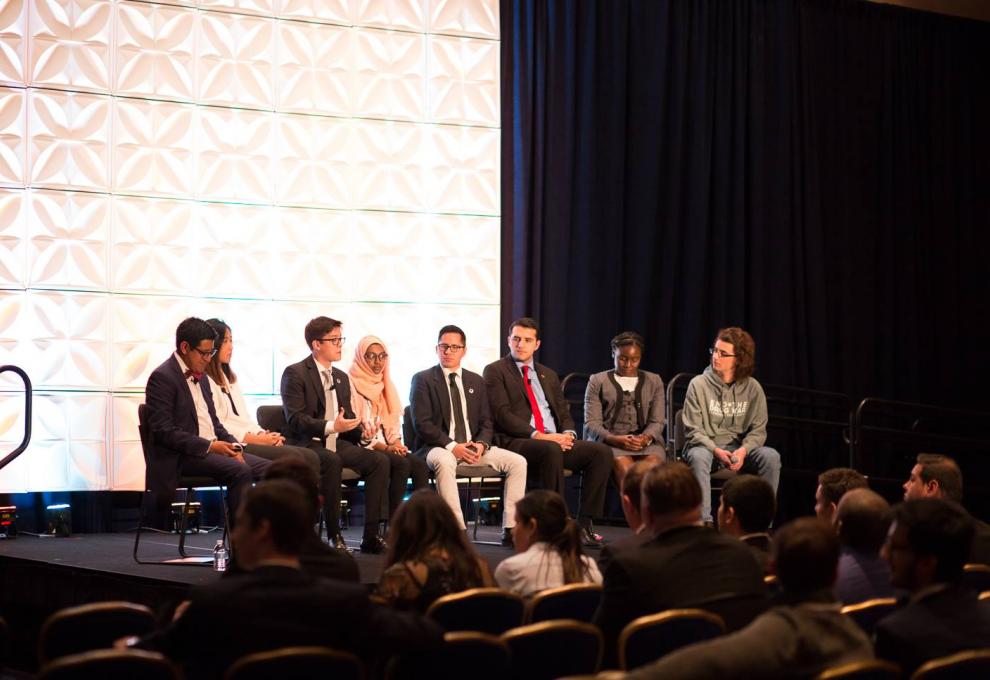The use of knowledge in society: apps inform consumers
Legislators are constantly debating the corporate responsibility regarding in-store marketing, but the reality is that modern technology has already found the appropriate solution.
The "Ampel" discussion
For a couple of years now, legislators are debating the so-called "Ampel" (German for: traffic light). The proposal consists in depicting traffic lights on grocery store products and deciding whether or not they are red (unhealthy), yellow (moderately unhealthy), or green (healthy). The models include more specific considerations, such as the level of sugar or the level of fat contained in the respective product. Overall, the "Ampel" would make a value judgement of grocery store products, made to be easily understood. Public health advocates hope to inform consumers about the benefits and risks of their consumption. However, the use of food pyramids throughout time should make us watchful of listening to governments when it comes to nutrition.
Denise Minger writes in her book "Death By Food Pyramid" about Louise Light's commissioned review of the 1956 food pyramid in the United States, which was ultimately rejected:
“The guide Light and her team worked so hard to assemble came back a mangled, lopsided perversion of its former self. The recommended grain servings had nearly quadrupled, exploding to form America’s dietary centerpiece: six to eleven servings of grains per day replaced Light’s recommended two to three… and rather than aggressively lowering sugar consumption as Light’s team strived to do, the new guidelines told Americans to choose a diet “moderate in sugar,” with no explanation of what that hazy phrase actually meant.”
Even schools of public health advocacy are quick to admit the foolishness that was the old food pyramid. So how exactly are we supposed to trust the current public health advocates in their claims, when they purport to make traffic light labelling compulsory?
And in any way, who would be helped by this mandatory labelling anyway? Those consumers who are interested in their nutrition won't be helped by a simplistic traffic light of red, yellow, and green, and those disinterested with their nutrition won't listen to a label in the first place. The complete ingredients is already on our food packaging, and yet obesity remains problematic.
It is sensible to reject "Ampel" labelling for the aforementioned reasons, as well as for reasons of crony capitalism: big businesses will be inclined to harm their competitors by lobyying legislators and agencies in short of the labelling colours. However, the "Ampel" isn't a big deal in comparison what some public health activists want to overtax and ban.
The truth is however, that modern technology has already provided consumers with the means to inform themselves independently. I know this for myself, as I am one of them. I personally use a beer app in order check on the product information and quality of the beer I am about to purchase. The same exists for wine. I am by far the only one using his smartphone in this way, as I often see people whip out their phones while grocery shopping.
Studies released by Google reveal this: 69% of smartphone owners turn to mobile search first in a moment of need. 76% of people who search on their smartphone for something nearby visit a related business within a day, and 28% of those searches result in a purchase.
Further research finds that 79% of smartphone users are "smartphone shoppers", meaning they use their device during their purchases. 62% are "standard smartphone shoppers", and 17% are "frequent smartphone shoppers". A third of smartphone shoppers are already using their phone in order to acquire information about their product. This gives them the opportunity to find trusted sources and hold the producers independently to account. Furthermore, in-store price comparisons are the most common shopping activity across all categories, meaning that consumers are going the extra-mile in order not to be ripped off by retailers. They keep the market competitive.
Modern technology is making consumers decisions more transparent and easy than the old-school labelling that some advocates are suggesting. Labels are there to be pretty. It's the bar code that gives us the info we want to get.




















